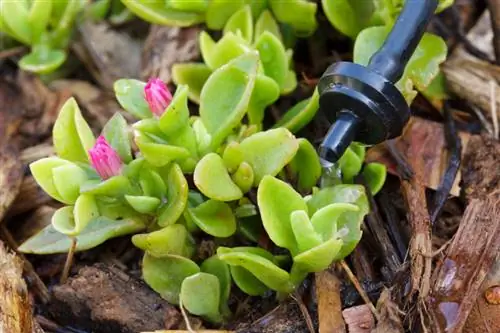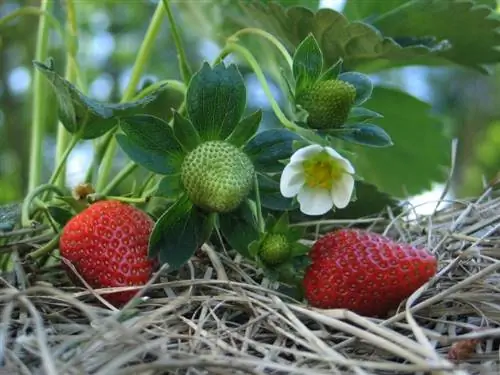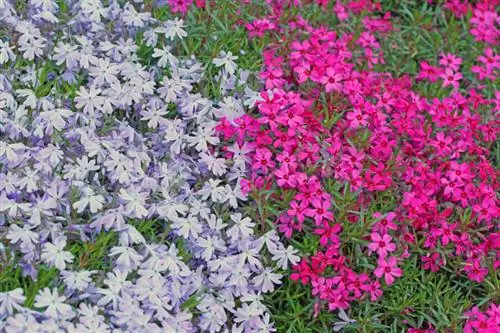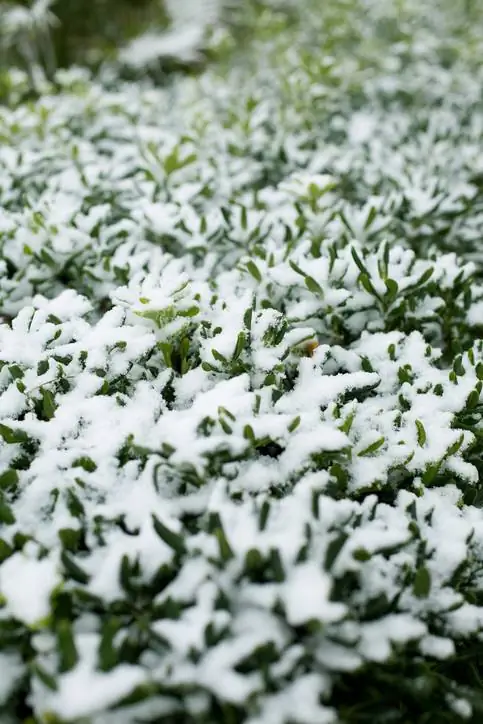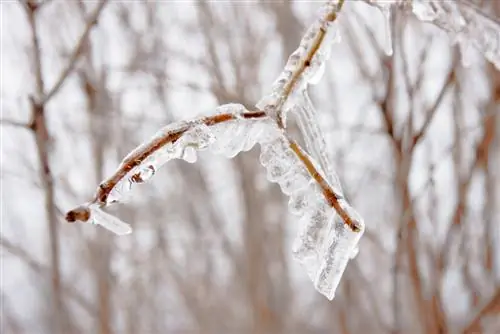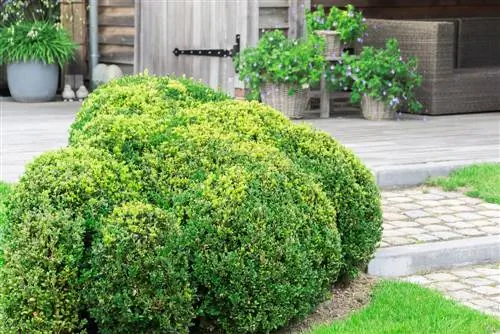- Author admin [email protected].
- Public 2023-12-16 16:46.
- Last modified 2025-01-23 11:20.
In the natural landscapes of South Africa and other African countries, the ice plant (Delosperma) occurs in rocky altitudes where the plant can usually cope with extreme drought. When cared for in the garden, the winter suitability of the ice plants depends on the respective species and the site conditions.
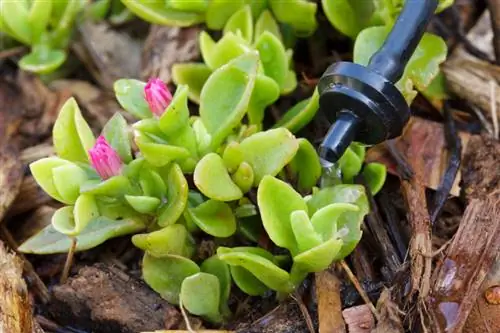
Are ice plants hardy?
Some ice plant varieties (Delosperma) are hardy and can overwinter in the garden, such as Delosperma Red Fire, Indian Summer, Fire Spinner, African Queen and Golden Nugget. It is important to have a sunny location with good drainage to avoid rot.
Basic site conditions for ice plants
Apart from the fact that there are species of ice plant with better or worse overwintering abilities, various location factors play an important role when it comes to overwintering outdoors. Ice plants of the genus Delosperma prefer locations that are as full of sun as possible, where good water drainage through the substrate must be guaranteed. Even for Delosperma species that tolerate sub-zero temperatures well outdoors, persistent winter moisture in the soil can mean a death sentence due to the ice plant's susceptibility to rot.
Winter-hardy varieties of ice plants
While relatively tall varieties of the ice plant in particular can only be overwintered outdoors in mild vineyard locations, the following species can usually be brought through the winter relatively well in the garden in this country:
- Delosperma Red Fire
- Delosperma Indian Summer
- Delosperma Fire Spinner
- Delosperma African Queen
- Delosperma Golden Nugget
So-called cold frosts or a substrate that is too wet can have a harmful effect on ice plants. That's why, on the one hand, you should only plant ice plants in locations where good water drainage is ensured by adding sand and gravel to the soil. On the other hand, you can also protect the ice plants from excessive winter moisture from above with an appropriate covering fleece (€6.00 on Amazon).
Overwintering a lack of hardy ice plant varieties
Cold-sensitive and short-lived ice plant varieties can sometimes still be saved until the next growing season if they are grown in a container. Then place the plants in a bright room before the first night frosts in autumn, but in which the temperatures should not rise significantly above 5 degrees Celsius in winter. Since ice plants often reproduce and multiply by self-sowing in one location, you can also try your luck outdoors if the plants are not frost-resistant and hope that young seedlings will grow in spring if the mother plant dies.
Plant out self-grown young plants early
If you have successfully grown young ice plant plants from cuttings or seeds, you should plant them outdoors as quickly as possible after the last night frosts in spring. The sooner the plants can grow in a suitable location, the larger you can spread your flower carpet during the flowering period and the better the chances of a successful overwintering outdoors.
Tip
The death of ice plants over the winter is usually not caused by a climate that is too cold at the location, but rather by too much moisture. Since ice plants do not tolerate sustained moisture at all, they need to be protected from rainwater if it rains more than snows over the winter. If the substrate around the ice plants is covered with a layer of gravel when planting, the soil will dry out more quickly after periods of rain than if the plant cushions were placed on humus-rich soil.

